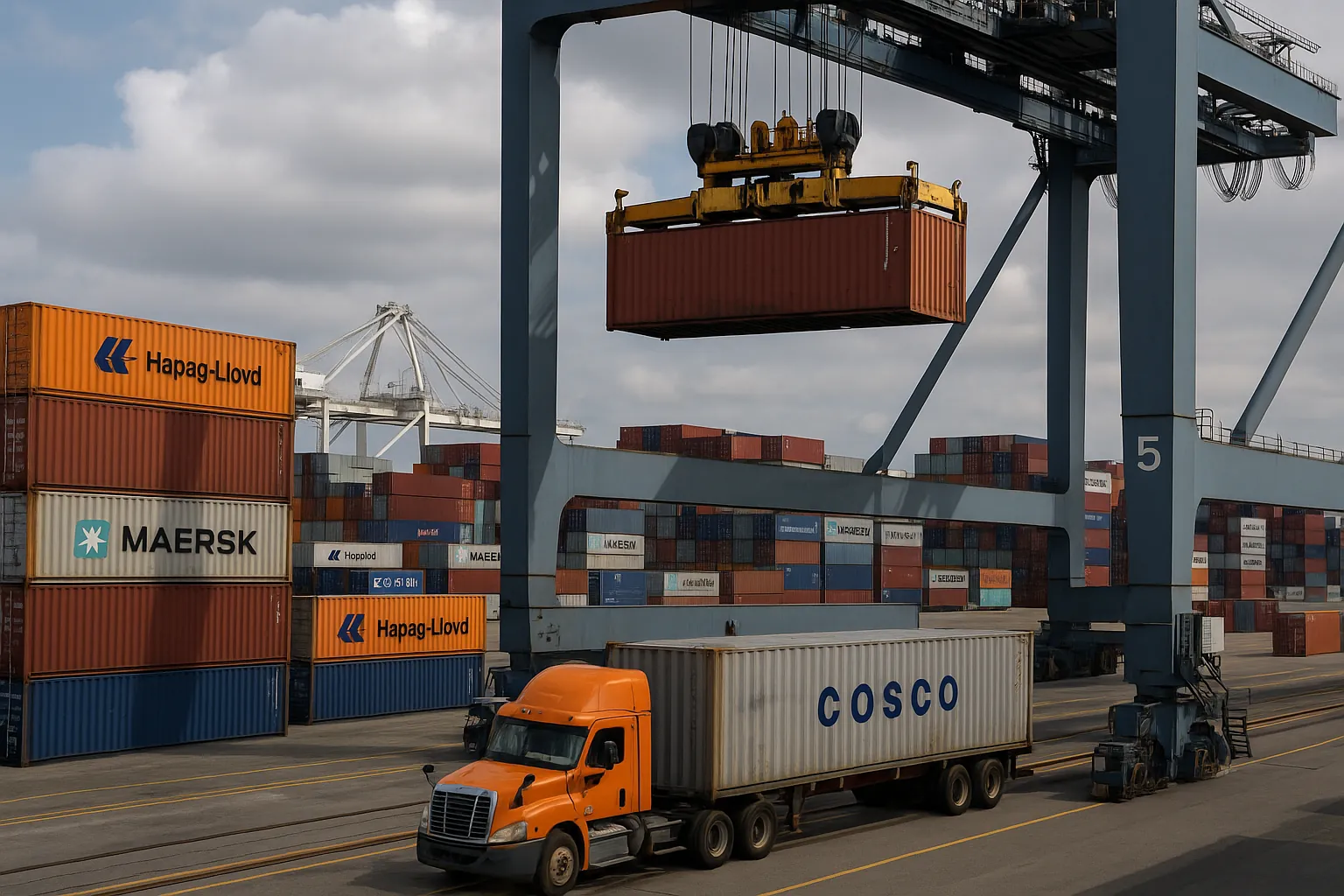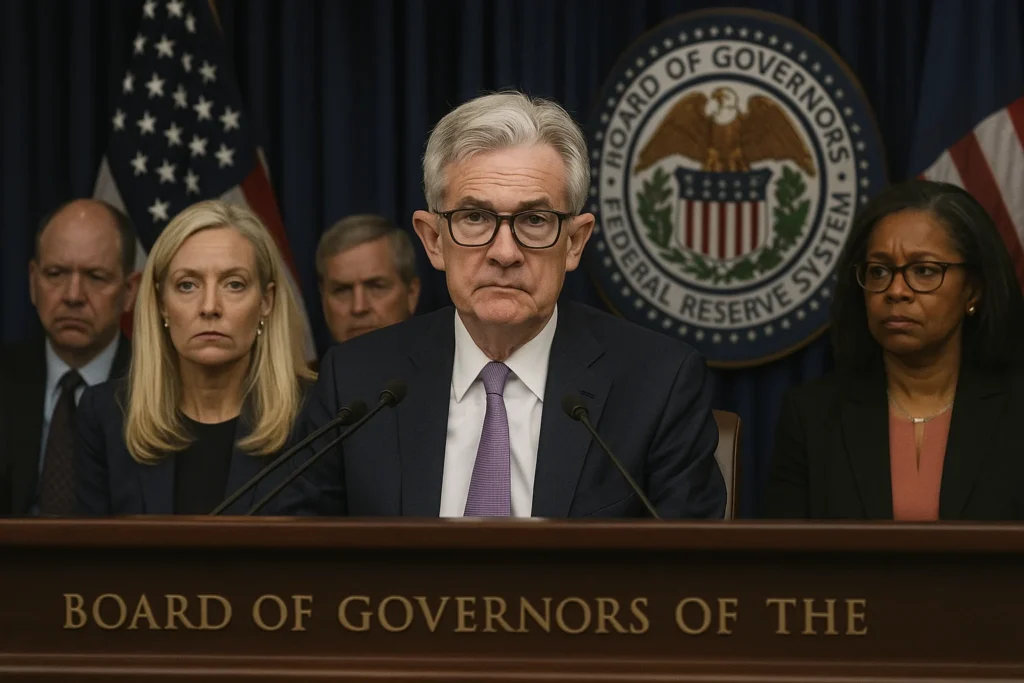Introduction
US container imports fell sharply in September — a direct result of President Trump’s renewed tariff war. The data tell a troubling story: America processed 2.31 million TEUs, the third-highest September volume ever, yet still a decline year-over-year. The contradiction reveals something deeper — tariffs are biting, not boosting. As global trade routes shift, logistics firms brace for another chaotic holiday season. The US container imports decline is more than a statistic; it’s a warning of economic disruption disguised as patriotism.
Context: A fragile trade balance
In 2025, Washington doubled down on protectionism. Trump’s second-term trade agenda, sold as a push to “rebuild American industry,” imposed sweeping tariffs on Chinese electronics, European auto parts, and Latin American steel. The administration frames these moves as necessary defense against “foreign manipulation.” Yet behind the rhetoric, US ports are slowing. Los Angeles and Long Beach — once roaring with container ships — now face bottlenecks not from demand, but from unpredictability.
According to the National Retail Federation, imports dropped 7% from last year, and inventories are thinning faster than expected. Retail giants, from Walmart to Target, are rushing to reroute shipments through Mexico and Canada. What’s marketed as a patriotic tariff policy is instead becoming a logistical headache for American businesses.
Oppositional Argument: The cost of political theatre
The mainstream narrative celebrates tariffs as leverage for national strength. But in practice, these policies act as political theatre — inflicting long-term damage on both importers and consumers. Economists at the Peterson Institute warn that the latest tariffs could shave up to 0.3% off GDP growth by year’s end. The administration calls that “acceptable collateral damage.”
Yet for logistics operators, “acceptable” means delayed ships, higher costs, and frustrated customers. The White House argues this is a temporary adjustment. But supply chain executives — not policymakers — deal with the daily chaos: cancelled routes, delayed customs clearance, and spiraling freight rates. It’s the middlemen of trade who are now paying for populist slogans.
The US container imports slump is not proof of resilience — it’s a symptom of policy arrogance.
Analytical Breakdown: Economic fallout in motion
Each tariff introduces new uncertainty into global trade. Freight indexes, once stable, now fluctuate wildly. The Shanghai Containerized Freight Index spiked 15% after the latest round of tariffs, reflecting the higher cost of redirecting shipments. Chinese exporters, meanwhile, are adapting faster than American importers — rerouting goods through Vietnam, Malaysia, and even Russia.
This adaptive agility exposes a crucial imbalance. The US remains dependent on foreign goods, but its trade policies now penalize the very arteries that feed its economy. Inflationary pressures are already visible: electronics prices rose 6% in Q3, while household goods jumped 4.3%. Trucking firms warn of cascading effects if ports slow further before the holidays.
Behind closed doors, White House advisers reportedly acknowledge the strain. But publicly, Trump frames the downturn as “sacrifice for sovereignty.” The data suggest otherwise: it’s a self-inflicted slowdown that risks spreading across retail, manufacturing, and energy sectors.
Human Perspective: The dockworker and the consumer
At the Port of Savannah, dock supervisor Ron Alvarez says cranes now sit idle longer than usual. “We used to clear a ship in 12 hours. Now, with new checks and paperwork, it takes 20,” he says. His team’s overtime has vanished. “Tariffs don’t protect jobs here. They’re taking them away.”
Meanwhile, inland consumers face a different reality. Prices for imported toys, electronics, and tools are climbing just as the holiday season begins. A midwestern retailer described his shelves as “half full, half delayed.” For small import businesses, the burden of new compliance rules — tariff codes, product reclassification, and customs audits — has become unbearable.
Counterarguments
Supporters of Trump’s tariff strategy argue that pain now means gain later. They claim it will pressure China and Europe into better trade terms. But the data undermine that optimism. In 2025, the US trade deficit with China widened by another $18 billion. Manufacturing reshoring remains a slogan more than a strategy — factories aren’t returning home; they’re relocating elsewhere in Asia.
Economist Ellen Hughes-Cromwick notes, “You can’t tariff your way to domestic revival.” She’s right. The US container imports data prove that protectionism doesn’t equal production. It equals paralysis.
Conclusion: A self-inflicted slowdown
September’s decline in US container imports isn’t just about fewer ships — it’s a symbol of how ideology trumps economics. Tariffs may look tough on paper, but in practice, they weaken the very trade flows America depends on. The country risks isolating itself in a world moving toward adaptive, regional alliances.
Trump’s tariffs create volatility that investors fear and businesses loathe. And as 2025 closes, the question isn’t whether imports will rebound — it’s whether Washington will admit that “economic nationalism” is strangling its own logistics lifeline. Unless policy pivots from punishment to pragmatism, the next recession could sail into port before anyone notices.
External Links
- Reuters: US container imports drop in September
- Peterson Institute for International Economics: Tariffs impact report
27 views






